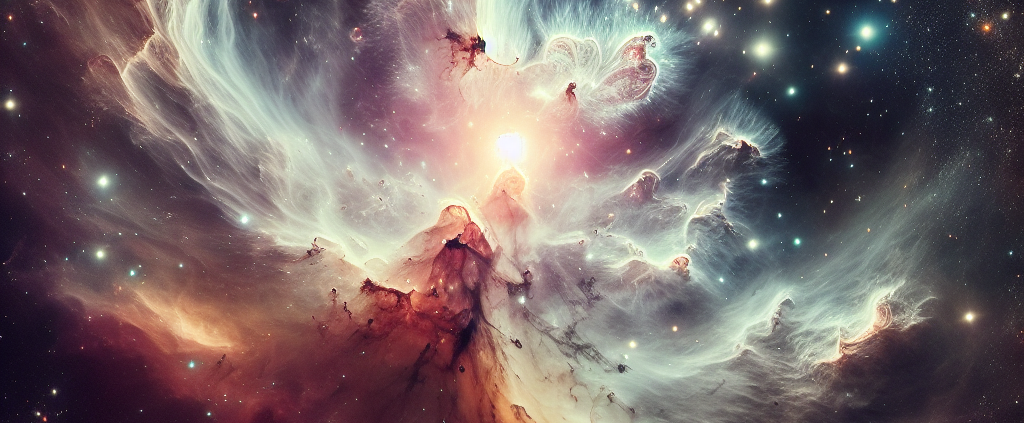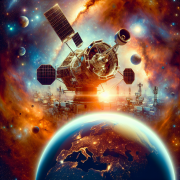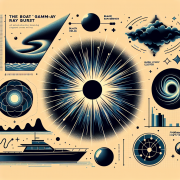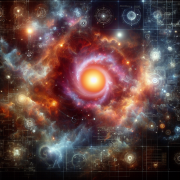Exploring the Cone Nebula: A Deep Dive into Cosmic Beauty and Star Formation
The cosmos has always been a source of wonder and mystery, prompting us to explore the unknown and pursue knowledge beyond the confines of our planet. Among the vast array of celestial phenomena, the birthplaces of stars hold a particularly enchanting appeal. These stellar nurseries, where gas and dust coalesce to give birth to new stars, are not only visually stunning but also provide insights into the life cycle of the cosmos. One such nursery, the Cone Nebula, stands out for its breathtaking beauty and the secrets it holds about the process of star formation.
The Enigmatic Beauty of the Cone Nebula
Located within the vibrant star-forming region NGC 2264, the Cone Nebula is a testament to the dynamic processes shaping our galaxy. This immense dust pillar, situated approximately 2,500 light-years away in the constellation Monoceros, spans roughly 7 light-years in length. However, the focus of our attention is often drawn to the region surrounding the nebula’s distinctive blunted head, which stretches merely 2.5 light-years across. To put this into perspective, this distance is just over halfway from our Sun to the Alpha Centauri star system, our nearest stellar neighbors.
The Cone Nebula was captured in unparalleled detail by the Hubble Space Telescope. This extraordinary image is a composite of several observations that highlight the nebula’s intricate structures and the interplay of light and shadow within this cosmic nursery. The nebula’s reddish veil, a result of dust and glowing hydrogen gas, adds to its allure, conjuring images of an ethereal landscape.
Unlocking the Secrets of Star Formation
The sculpting of the Cone Nebula’s remarkable features is believed to be the work of energetic winds emanating from newborn stars. These winds, coupled with the nebula’s own gravitational forces, play a crucial role in shaping the nebula and influencing the birth of future stars. One massive star, designated NGC 2264 IRS and observed by Hubble’s infrared camera in 1997, is thought to be a significant contributor to this sculpting process.
Understanding the dynamics at play within the Cone Nebula and similar star-forming regions is vital for unraveling the mysteries of stellar evolution. By studying these cosmic nurseries, scientists can gain insights into the conditions necessary for star formation, the lifecycle of stars, and the overall structure and evolution of the galaxy.
A Striking Image That Inspires
The Hubble Space Telescope’s image of the Cone Nebula is not only a scientific treasure but also an artistic masterpiece. It serves as a reminder of the universe’s unparalleled beauty and the endless possibilities for discovery that lie within the cosmos. The image captivates the imagination, inviting us to ponder our place in the universe and contemplate the extraordinary phenomena that occur beyond our Earthly confines.
In my journey, from the realms of artificial intelligence and cloud solutions to exploring the nuances of legal studies, the constant has been a profound appreciation for the interconnectedness of knowledge. My experiences have taught me that innovation often resides at the intersection of disparate fields. The study of celestial phenomena like the Cone Nebula offers a compelling example of this, bridging the gap between astrophysics and human curiosity, inspiring us to reach for the stars, both literally and metaphorically.
In conclusion, the Cone Nebula serves as a captivating example of the universe’s wonders, reminding us of the beauty and complexity inherent in the cosmos. It encourages us to continue exploring, learning, and marveling at the universe that surrounds us, driving humanity forward in our quest for knowledge.
Focus Keyphrase: Cone Nebula








Leave a Reply
Want to join the discussion?Feel free to contribute!